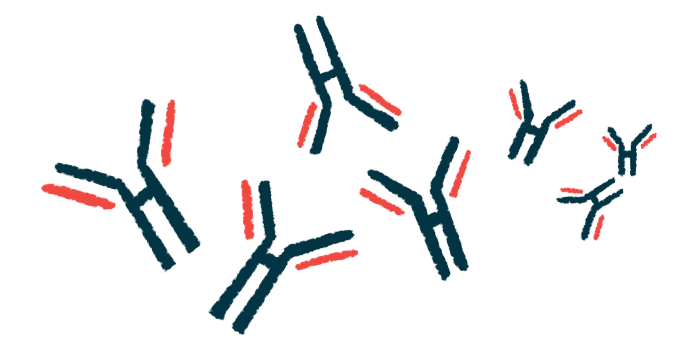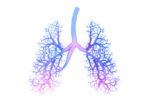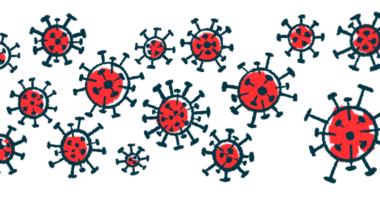Galectin-3 neutralizing antibodies ease fibrosis in SSc mouse model
Protein tied to disease severity, lung and heart problems, immune cell alteration

Antibodies designed to neutralize the protein galectin-3 (Gal-3) eased scarring and inflammation in a mouse model of systemic sclerosis (SSc), a recent study shows.
Gene activity related to Gal-3 and the proteins it interacts with were found to be strongly associated with disease severity, lung and heart malfunction, and immune cell alterations in the blood of SSc patients.
This, along with previous evidence implicating Gal-3, led the scientists to develop the therapeutic antibodies, which were also found in mice to counteract SSc-associated pathways and normalize abnormal gene activity patterns.
“The results of the present study suggest that adequate anti-Gal-3 drug therapy may benefit this patient population for whom a critical medical need persists,” the scientists wrote in “Antibody-mediated neutralization of galectin-3 as a strategy for the treatment of systemic sclerosis,” which was published in Nature Communications.
In SSc, excessive production of collagen, a structural protein, leads to scar tissue (fibrosis) building up in the skin and other organs. This abnormal wound-healing response is thought to be the result of a combination of factors, including inflammatory immune attacks.
The role of Gal-3 in systemic sclerosis
Gal-3 promotes inflammation, fibrosis, and collagen production, which “strikingly reflect the clinical picture of SSc,” according to the authors.
Indeed, a role for the protein in SSc has been proposed. Studies indicate that higher circulating levels of Gal-3 are linked to lung fibrosis, cardiac issues, and mortality risk. As such, inhibiting it could be a promising therapeutic approach for SSc and other fibrotic or inflammatory diseases.
In this study, scientists further explored the link between Gal-3 and SSc. They examined gene activity, or expression, in the blood of 249 SSc patients and 365 healthy people who’d been involved in a cross-sectional study called PRECISESADS (NCT02890121).
Three distinct patient clusters were identified. The first group (86 people) was characterized by a predominance of limited cutaneous SSc (lcSSc), a subtype of SSc where fibrosis mainly affects the skin and less often the internal organs, and an intermediate inflammatory profile.
Another group of 43 people was marked by high levels of inflammation, lung and cardiac involvement, and high disease activity, consistent with a diffuse cutaneous SSc type.
The remaining 120 people showed a more “healthy” gene expression profile regarding inflammation and had a predominance of sine scleroderma SSc, a rare disease subtype that lacks skin involvement, but is marked by internal organ damage.
The Gal-3 “fingerprint,” that is, the pattern of gene activity related to Gal-3 and the proteins it interacts with, differed between these groups and was linked to clinical features.
“Overall, this Gal-3 fingerprint showed that high expression levels of Gal-3 interactants were strongly associated with impaired vital organ function in patients with SSc as well as with disease severity,” the scientists wrote.
The Gal-3 fingerprint was also linked to distinct immune cell profiles.
Gal-3 gene activity was increased by 35% in the patients linked to lcSSc and by 22% in those associated with dcSSc, relative to healthy controls. A number of Gal-3’s interaction partners also had different expression levels in patient groups compared with healthy people.
Neutralizing Gal-3
“In addition to highlighting the association of Gal-3 and its interactants in SSc, this Gal-3 fingerprint could also serve as a stratification biomarker to discriminate patients based on disease features and/or inflammatory status in a targeted treatment approach,” wrote the researchers, who then developed antibody candidates that could neutralize Gal-3. The effectiveness of two antibodies — D11 and E07 — was evaluated in a mouse model of SSc and compared with that of TD139, an inhaled Gal-3 inhibitor that’s been tested in clinical trials in people with pulmonary fibrosis.
Blood Gal-3 levels, which were significantly increased in the SSc model, were reduced with all three treatments. All the treatments also led to significant reductions in skin thickness and in skin and lung collagen content.
Reductions in markers of inflammation were observed to varying degrees with the three treatments. In particular, E07 increased the ratio of certain protective immune cells and decreased the ratio of other inflammatory cells, suggesting, “positive outcomes on the resolution of lung damage and inflammation,” the researchers said.
Gene expression analyses indicated E07 altered the abnormal gene activity patterns in SSc mice that started to more closely match those of healthy mice. The E07 antibody was also predicted to inhibit SSc-associated signaling pathways that were found to be altered in SSc patients.
“Collectively, these findings demonstrate the translational potential of Gal-3 blockade as a therapeutic option for SSc,” the researchers wrote, adding they “allowed several key molecules involved in the [disease mechanisms] of SSc” to be identified.







